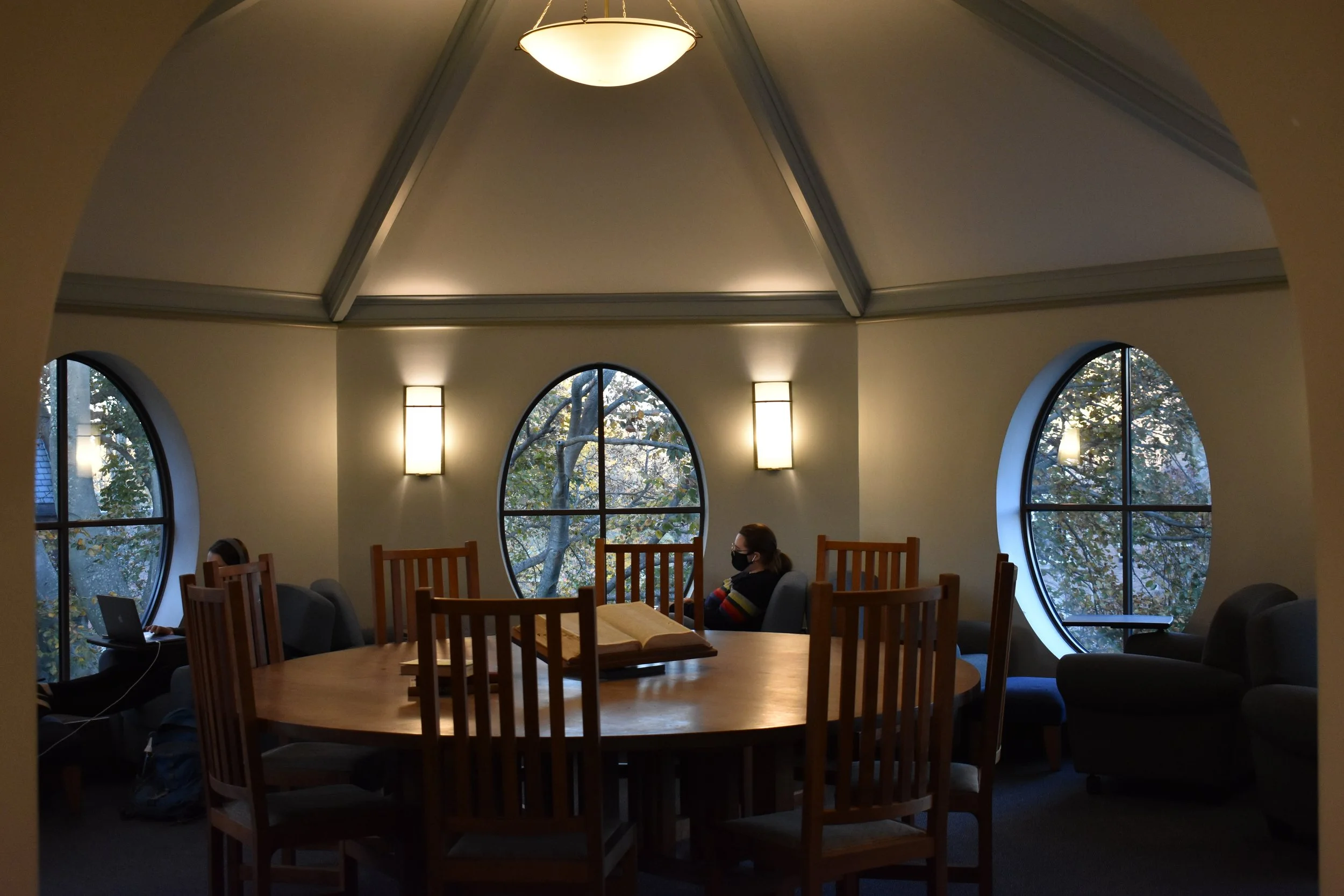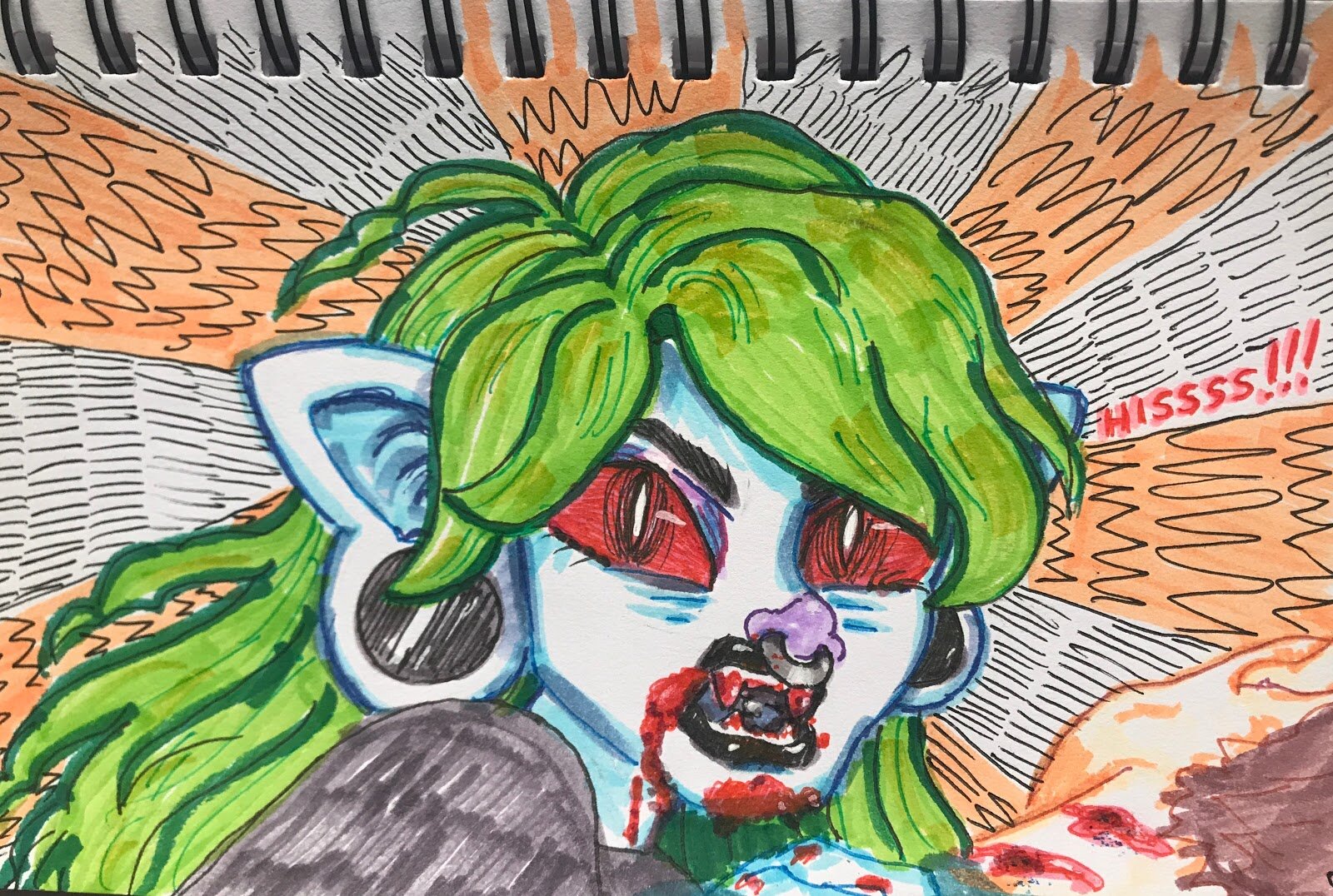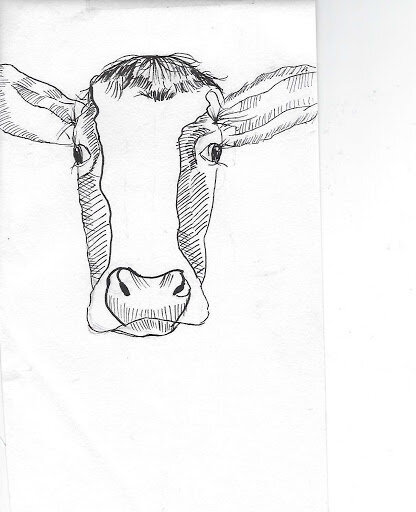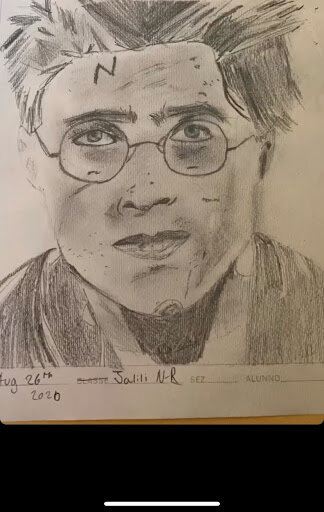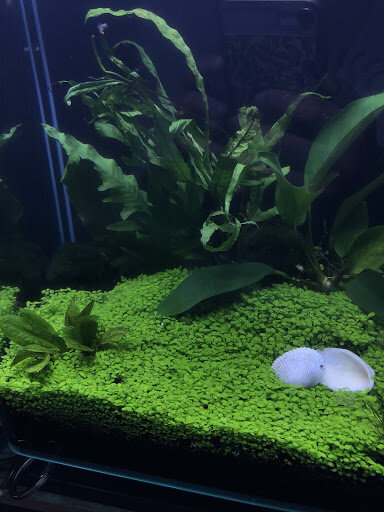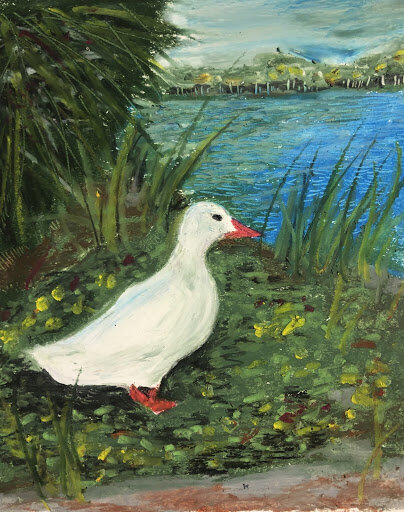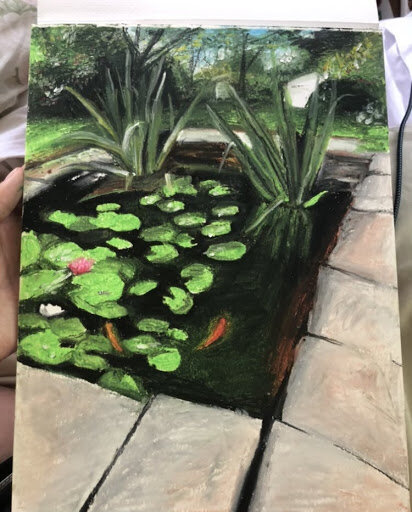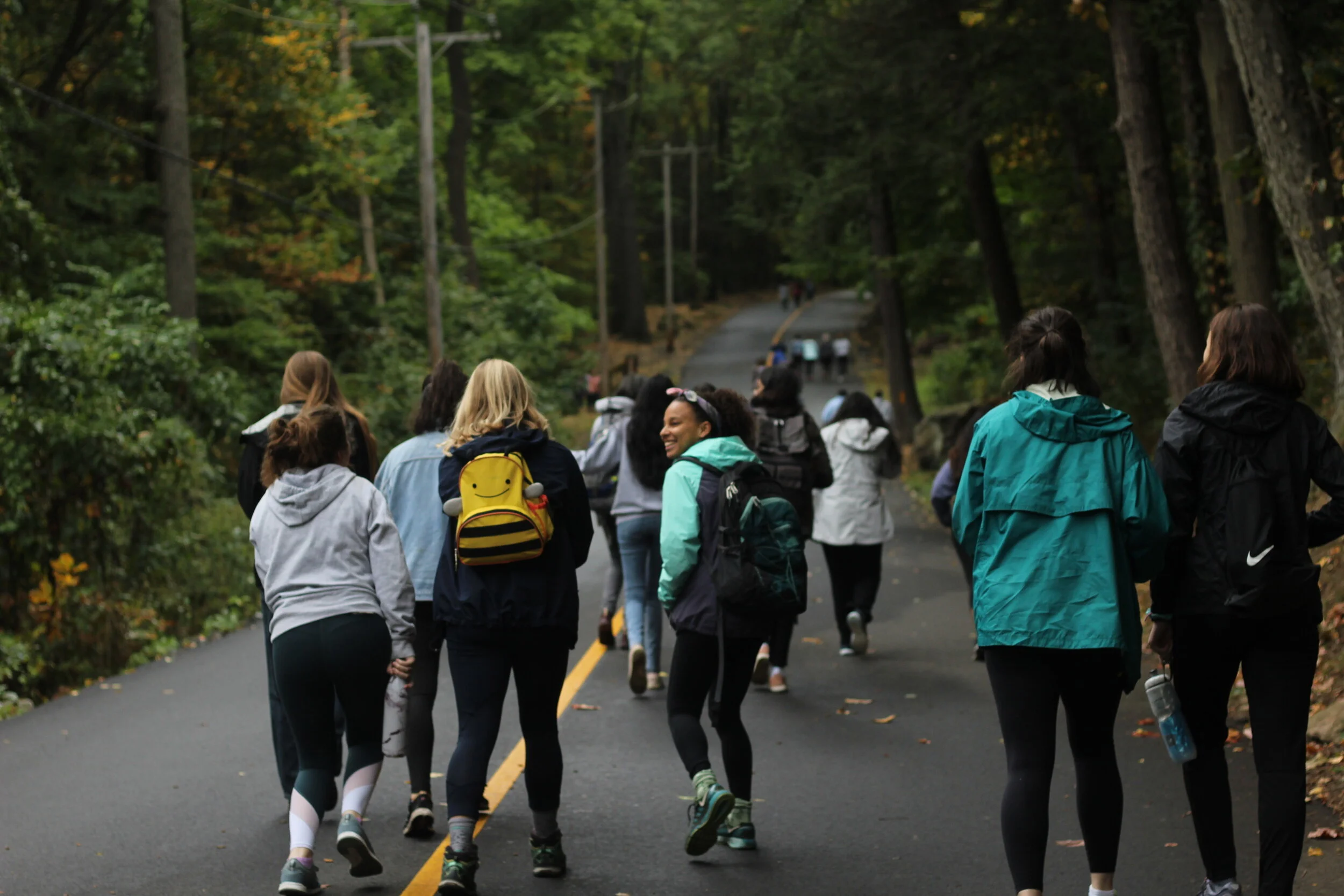On Wednesday, April 13, 2022, Bagel Therapy graced the Gettell Amphitheater stage for the first time. Spotlit by a hot sun and fanned by a cool breeze, the band — comprised of Mira Zelkowitz ’22 on lead guitar, Mav Leslie ’23 on guitar and vocals, Jenny Yu ’24 on bass and Sofia Lopez Melgar ’24 on the drums — started their set around 5 p.m. With flaring drums and driving guitars, the group began their first song: a cover of “Percolator” by alternative group Charly Bliss.
Faculty propose new Critical Race and Political Economy department
On Tuesday, March 29, 74 Mount Holyoke community members gathered on Zoom to hear multiple professors discuss the creation of a new department and the future of the Africana Studies, Critical Social Thought and Latinx studies departments. Led by Class of 1929 Dr. Virginia Apgar Assistant Professor of Latina/o Studies Vanessa Rosa and Iyko Day, Elizabeth C. Small associate professor of English and chair of Critical Social Thought and Gender Studies, the event was held during the College’s annual Building On Our Momentum Conference. Faculty members joined Rosa and Day, having all worked towards the formation of this department for around six years.
Students share favorite study spots around campus
Whether for a quiet slumber, an intense writing session or hours of studying, many students have favorite spots around campus to visit when they need to prepare for finals. Mount Holyoke News asked students via Instagram stories to share their ideal location for a study session — check out these spaces next time you need to knock out some homework.
Mount Holyoke College pairs with alum Alison Rogers ’12 and the program USEFULL
During the later months of the fall 2021 semester, the Mount Holyoke Dining Commons will begin implementing a solution to the challenge of maintaining the flexibility of takeout options without creating excessive waste. Starting soon, students will be able to take their meals to-go using returnable, reusable takeout containers. This program will allow students to keep the takeout option while also reducing waste. Currently, the Dining Commons is providing single-use compostable containers for students to use, both for eating in and takeout.
The return MoHome: Students divided over College’s COVID-19 protocols
Whether you’re a first year stepping onto campus for the first time or a senior experiencing waves of nostalgia while walking around the Mount Holyoke campus, there are new experiences to discover as the College welcomes back the full capacity of students for the new academic year. Although a majority of students seem glad to be back, some feel anxious about returning. Opinions vary widely on how the school is handling the COVID-19 pandemic and the protocols that should keep our community safe.
Journalist Mary Mapes Visits Mount Holyoke To Discuss Movie ‘Truth’
Inspired by a viewing of James Vanderbilt’s 2015 film “Truth,” Visiting Senior Lecturer in English Todd Brewster’s Introduction to Journalism class welcomed a surprise guest: American journalist and producer Mary Mapes. The film, set in 2004, follows Mapes, producer of CBS News program “60 minutes,” and its anchor, Dan Rather, as they cover one of their biggest stories: an investigation of then-President George W. Bush’s history of military service and how he avoided being drafted into Vietnam using his father’s connections.
Finally MoHome: Student Experiences Returning To Campus
Ten months after Mount Holyoke’s campus was forced closed due to COVID-19, many students have been able to return to the College.
Though a small number of students lived on campus during the fall of 2020, nearly 800 students are now physically at Mount Holyoke. For some new students, this is the first time they have ever seen the campus in person. For others, it is their final semester.
MoHome Sickness 4: In-Person Classes
I’m writing this week’s edition with a bit of caution — it may be too emotional, too nostalgic. If, like me, you perform better in structures and routines, online classes aren’t ideal. Joining Zoom meetings or Discord channels for office hours just doesn’t cut it for the conversations that happen in professors’ actual offices flooded with books.
Skylar Hou: Artist, Photographer and Mount Holyoke Student
Art has been a feature of Skylar Hou ’22’s life since they were a child.
“Drawing has been such an important part of my life since I could remember,” Hou said. “I got my first digital camera when I was 8.”
For Hou, art has personal meaning. “Mostly, I draw and take pictures just to make memories last,” they said. “I have a sketchbook with me all the time so that I [can] draw things whenever I want. Sometimes it is a scene that makes me feel happy, sometimes it’s just a tiny random object, like a soda can. In the past two years at Mount Holyoke, I [have taken] so many pictures and I created a scrapbook and lots of art projects of the memories.”
Mount Holyoke Introduces New Office of Community and Belonging
Photo by Ali Meizels ‘23
By Ansley Keane ’23
Staff Writer
At Mount Holyoke College, there is a particular emphasis on the idea of community. The College has a Community Center rather than a student center and Community Advisors rather than residential advisors. These sentiments are in line with the introduction of the new Office of Community and Belonging.
In the Oct. 16 edition of “The Dean’s Corner,” Vice President of Student Life and Dean of Students Marcella Runell Hall’s weekly newsletter, Hall announced the construction of a new Office of Community and Belonging within the Division of Student Life. In her email, Hall noted that the Office of Community and Belonging was created “in [an] effort to further Mount Holyoke’s commitment to building a greater sense of community and belonging for students.”
Associate Dean of Students for Community and Inclusion Latrina Denson and Dean of Religious and Spiritual Life Annette McDermott serve as co-directors of the Office of Community and Belonging. In a joint statement, Denson and McDermott explained that the Division of Student Life decided to create the Office of Community and Belonging during the summer of 2019. “During this time, we [began] working with an outside consultant to reimagine our work and conceptualize an integrated model for the Mount Holyoke College students,” the statement read.
The Office of Community and Belonging webpage states that “you can find your place at Mount Holyoke” and that creating a “beloved community” is a central goal of the office. Hall’s email and the office’s webpage both emphasize the importance of inclusivity and social justice on campus.
While the idea of a “beloved community” may seem relatively abstract at first, Denson and McDermott shared what it means to them. In a statement written by both deans, they explained that American author “bell hooks writes that a ‘beloved community is formed not by the eradication of difference but by its affirmation, by each of us claiming the identities and cultural legacies that shape who we are and how we live in the world.’”
They continued, “hooks’ understanding is one lens that gives us both inspiration and helps us pay attention to our campus engagement and student experience and see how we can encourage all of who you are to be — we want to celebrate and make space for the whole person who chooses Mount Holyoke College.”
The Office of Community and Belonging is acting on the idea of a “beloved community” by “provid[ing] programs that support social justice education, dialogue, celebration and identity development including intersectionality, as well as increasing understanding of the role that liberatory consciousness, religion, ethics and spirituality play when working toward reconciliation, racial healing and transformative justice,” according to the webpage. As co-directors, Denson and McDermott shared that they hope this office will mark Mount Holyoke as a place where “every student who enters the gates of MHC will see themselves as part of the community and over time [feel] a deep sense of belonging,” in a joint statement.
Denson shared that she is especially excited “about engaging more students of color affiliated with the cultural centers in spiritual identity development and the intersections of their cultural and spiritual identities.” She is also looking forward to “the opportunities to continue expanding the Intergroup Dialogue Program here at MHC in collaboration with not only our integrated areas, but Academic Affairs and our visiting lecturer, Molly Keehn.” Denson noted that her “role has been and will continue to be focused on social justice education and training, identity development, and the facilitation of dialogues across different experiences, beliefs, values, and identities. This role, as we reflect on the state of our global community and its impact on our diverse community, is more important than ever before.”
The Office of Community and Belonging is a collaboration between the Office of Community and Inclusion and the Office of Religious and Spiritual Life. Denson explained that “Community and Inclusion provide opportunities for identity exploration, education, and celebration.” Meanwhile, the Office of Community and Belonging will “[integrate] the model with Religious and Spiritual Life to place intentionality on an intersectional framework. It’s a frame that connects the curricular and co-curricular,” according to both deans. The Office of Community and Belonging will include “a frame where students will learn, grow, and feel like they matter,” Denson said. “We are not only creating an inclusive student community, but a community in which every single person can learn from each other, grow, and develop while feeling that they belong and matter,” she added.
Cultivating a lasting sense of inclusion and acceptance is not without its challenges, and students are a part of this work. The cultural centers, which are designed to serve as sanctuaries for and support students, the MoZone Peer Education Program, a student-led social justice education program and Intergroup Dialogue, a program that teaches students how to bridge cultural differences, are all part of the Office of Community and Belonging programming. While it is a very new office, it is already attempting to ensure that all students feel welcome at Mount Holyoke by providing a secure space for education and growth.
“The Office of Community and Belonging seeks to create a student culture of belonging throughout the campus that embraces inclusivity, diversity, and equity and celebrates all of who we are,” Denson and McDermott said in their shared statement. “Our programs and services are oriented toward meeting this goal of building a socially just community.”
“We want the students to know that Community and Belonging is a place where we not only encourage students to ask questions but to embrace their authentic self,” they continued. “A place where they do not have to leave one of their identities at the door, but bring their whole self, to practice, engage with [them] across differences to learn and grow.”
MoHome Sickness: Shared Spaces
Graphic by Trinity Kendrick ‘21
By Tishya Khanna ’23
Staff Writer
Some of us keep our rooms messy, some tidy and some a mix of the two. Nostalgia creeps in as I recollect wanting to make space in my friend’s messy res hall room to listen to music, study or even just sit and chat. Usually we ended up sitting on the floor. When I didn’t feel like walking back to my room on busy days, a friend’s space was a haven I went to for my habitual afternoon naps.
I’ve never had a meticulously tidy or an entirely messy room. Well, it could be horribly disheveled at times, but it’s usually a combination of orderly and cluttered. I also barely live in my room. I like to think of the campus as an extended, lavish home — the Dining Commons is the kitchen, the library is the study, the Makerspace is the art room, the rooms in Blanchard Hall are offices and the dorms are living areas and rooms to sleep in. It’s a shared living space. There, your friends are your family — your community is your family.
I also miss the movement itself. Tired of studying? Walk to the Dining Commons, Grab ’n Go or the Cochary Pub & Kitchen to get a coffee or snack. Nice day out? Walk across the lakes. Can’t understand a concept from class? Take a walk to your professor’s building for office hours. Only five minutes left for class? Grab your bag and sprint.
Now, in quarantine, I appreciate having that space to move freely between places on our small map even more. I liked the freedom to allocate different spots for different purposes, unlike in quarantine, where space is confined. For many of us, our bedrooms are now for studying, sleeping, working, making art, living and everything in between.
I liked bumping into friends now and then — the casual domesticity of it, the dailyness, the mundanity. A benefit of shared spaces is that your daily frustrations dissolve more easily when others surround you than when you’re by yourself. We’re all struggling to keep pace with our hectic personal worlds: the module system, a pandemic that seems to have no end in sight, the never-ending work. Our common frustrations are now divided into individual ones. When trying to converse with a friend, we struggle to decide upon a time to meet. We have to make more effort than before the pandemic, when we could just walk up to their room or meet them somewhere on campus.
For some of us, the struggle extends further, to a difficult home life, the death of a loved one, declining mental health and more. College is a safe space that, for some, is more of a home than their own. The lack of a physical support system around manifests in wild, unpleasant ways. It’s easier to be kind to yourself when the people around you are kind to you too. An extended hand, a simple knock on the door or a genuine inquiry make an essential difference.
Our shared spaces offer shared emotions and shared tenderness. Sometimes shared misery is laughter. I’d rather be crying about the ever-growing list of things wrong with the world with a friend who’s just as miserable and willing to ease the pain through humor. Then we’d go to the Dining Commons and have ice cream with hot fudge.
Now our relationships translate to long phone calls and Zoom study sessions. If anything, it brings to light one of the hallmarks of being a Mount Holyoke student: our community. Even when we are miles apart from each other, the faculty and students alike come together with a diligent, ceaseless effort to preserve some virtual version of the shared space so many of us call home.
The Annual Monster’s Ball Goes Virtual
Graphic by Penelope Taylor ‘20
By Rebecca Gagnon ’23
Staff Writer
The Mount Holyoke Symphony Orchestra hosted its 10th annual Monster’s Ball as a virtual haunted castle on Oct. 24. The Monster’s Ball is a Halloween dance in which people dress in costume and dance to music played by the orchestra. This year, the virtual Monster’s Ball had about 60 participants.
“We are doing a very unusual Monster’s Ball this year where I have commissioned Lillie Rebecca McDonough [to compose],” Orchestra Director and Associate Professor of Music Tian Hui Ng said. McDonough is a film composer who got her start as a classical pianist. Ng explained that the students “set themselves up into groups and the groups came up with a concept that they would love to commission [McDonough] for.” Each of those groups then became a breakout room of the larger meeting, also representing the individual rooms in the virtual haunted castle.
In this unique Monster’s Ball, the orchestra started the dance, as they always have, with a waltz. Participants were encouraged to get up and dance together in the main Zoom room. After the song was finished, Elizabeth Ramirez, the stage manager, assigned every participant a haunted room and the audience would watch a performance by specific groups in the orchestra.
“We ended up coming [up] with … a constant rhythmic pulse of some sort, to bring intention to the piece, such as the clicking of the clock,” Sarah Day ’22, a music major and president of the Mount Holyoke Symphony Orchestra, said. “I guess from there it took a thematic turn, thinking about what other kinds of sounds we wanted present. It was more what we wanted to represent, which ended up being, ‘Let’s look at fall. What do you think of Halloween?’”
Day added, “You have the one side of warm, pumpkin spice lattes and good feelings versus the creepy, dark, magical, spooky Halloween.”
Day’s group became the Sugar, Spice, Creepy and Mortality room where the participants followed the storyline between good and evil. Some groups had a set storyline, while others used different techniques. One group, who called themselves the Witches, made ink dropping videos alongside experimental music. Another group did a live experimental performance by shining flashlights to create a haunting feel. A third performed traditional waltz music.
“I thought [the Monster’s Ball] was so cool and so interesting as a project,” McDonough said. “Depending on the brief, we really got to do different things together, and I could ask them questions about what sort of things they were hoping to play or how they wanted it to feel,” McDonough further explained the collaboration process with the students. “I took in all that information and got to work in my notation software, printed something out, gave it to them and then they basically all recorded at home separately.”
“If you can imagine,” Ng said, “the first week of the semester we had auditions, the second week we had the first meeting, the third week [McDonough] met us, to see who we are, the fourth week we decided on the instrumentation. The fifth week [McDonough] started writing and in the sixth week she delivered. In the seventh week we recorded and the eighth week, it was ready.”
“It was amazing seeing what happened when the music went back to them and they created these videos that were astonishing,” McDonough said. “It was so cool the way they picked up on moments in the music and then worked with it and did something cool. … I was very impressed with the care that they took with it and crafting their vision that really represented what they had in mind. I was blown away.”
“It has been an incredible journey of two months,” Day summarized. “It is hard to pack that much from both the composition and video side to the stage managing side to the board, to the first-years and everyone who keeps coming back. I think that is something we can be grateful for: the community that keeps coming together.”
Mount Holyoke Students Share Their Quarantine Projects
By Woodlief McCabe ’23
Staff Writer
This summer and fall looked different for all of us. The time when we would normally be going out and enjoying the company of others was transformed into a time of solitude and anxiety. Mount Holyoke students, just like people all around the world, have found ways to deal with feelings of isolation via the power of creation. Here, students share their work from various media and styles, reminding us that art and creation haven’t gone anywhere.
Gina Pasciuto ’23 has spent quarantine making embroidery art that she showcases on her Instagram @cursedembroidery. “I’ve been working on embroidery as a way to keep my hands and mind busy since Christmas, and the skills I’m picking up have been very useful during the pandemic,” she said. Her commissions are currently open.
Cadence Cordell ’23 has spent quarantine with a needle and thread. “Sewing has really helped me keep calm during quarantine, and, during Zoom classes, helps me stay focused on the lesson at hand,” she said. “I hand sew the stuffed animals and, with my new sewing machine, have recently started making clothes as well.”
Maggie Kamb ’22 shares her “gay vampire art.” These two characters have been featured in her art before. She describes the first piece as “before quarantine” and the second two as “after quarantine.”
During quarantine, Autumn Lee ’24 opened an Etsy store named SoleilTies where she makes and sells bandanas for dogs. “I pretty much decided to do this because I have recently gotten back into sewing and I have been spending a lot of time with dogs lately,” Lee said. “This seemed like a sensible thing to do.”
Emily Eayrs ’23 has been sketching over quarantine.
Phoebe Murtagh ’21 has been working on this skull afghan for eight years, but has been especially productive since the end of last semester. “I was working on it in between finishing the semester and finding an internship. At the time my city was pretty much shut down, so audiobooks and crafts occupied a fair amount of my time,” she said. She spent this summer piecing together the hand-crocheted skulls and attaching the long strips of the skulls together in an offset pattern. “The multi-step process and the sheer size of the project is why I've been taking so long at it,” Murtagh said.
In August, Jalia Nazerali-Ruddy ’24 created these two drawings, one of Harry Potter (right) and one of a tiger (left).
Tory Halsey ’23 has made these oil pastel pieces of natural scenes. Halsey attempts to give Mount Holyoke students a little bit of MoHome sickness with her portrait of Jorge. She has also been constructing a tank for her aquascape where she keeps aquatic snails and plants.
Students Living on Campus This Fall Share Experiences
Graphic by Trinity Kendrick ‘22
By Rebecca Gagnon ’23
Staff Writer
On Aug. 7, Mount Holyoke announced that it would not be allowing the vast majority of students to live on campus during the pandemic. The only students who were permitted to remain were those who had applied to live on campus under circumstances that could not be resolved. According to Vice President for Student Life and Dean of Students Marcella Runell Hall, as of Aug. 13, there were about 180 students on campus.
“It’s really sad around here,” Samira Khan ’22, who currently lives on campus, said. “It just feels like you are living in a zombie land.”
Khan, who is from Bangladesh, describes herself as a semi-domestic and international student. She spent part of the summer in Bangladesh and then applied to stay on campus for the school year. When she was approved, she went to spend a week with family near Mount Holyoke. “I was already in this county and I was staying with my relatives [on] just a temporary basis and then, just a week later, [Mount Holyoke administration] said we [were] going online,” Khan said. “I didn’t have a place because it was just a one-week [plan] and this was my only option.”
This story resonated with others who are staying on campus. Parikshita Gya ’22 is another international student living on campus who was afraid to go home. Gya described not living in good studying conditions back home, a large reason for staying on campus. Additionally, Gya mentioned being “very afraid of [President Donald] Trump pulling one of his cards again and barring us entry.”
Although there are some people who are still on campus on a regular basis, both faculty and students feel that there has been an unwelcome change this semester.
“It’s just really isolating,” Emily Jones ’23, another student living on campus, stated. “I don’t know, I just think that everyone is trying to get through it.”
“My impression from my horror movie background,” Professor of Biological Sciences Gary Gillis said, “is it just feels like a zombie apocalypse about to start and I am sad that so many people are missing out on this amazing opportunity in this cool space.” Gillis is an associate dean of faculty, the director of the Science Center and a professor in the biological sciences department who is currently working from home.
As a member of the College’s administration, Gillis said, “It was kind of my job to convey to the faculty that this last spring and summer we were really trying to de-densify the campus. … The easiest thing for me in deciding to work from home was kind of just abiding by the philosophy I was telling everyone else.”
Other professors decided to work from home as well, for the safety of co-workers and students. “The best part [of working from home],” Morena Svaldi, lecturer in Italian and the faculty director of the Language Assistant program, said, “is that I can switch my roles very quickly. The difficult part, I think, is that there is no separation between your personal life, personal space and professional space.”
This is a difficulty faced by students who are still living on campus as well. “Normally I would go to classes,” Khan said. “But now it’s just like, wake up, go to your desk, study and then whenever your lunch or dinner time is, you go out for just that. It’s sad.”
The rules that are being enforced now are the same rules that all students who were previously planning to live on campus would have to abide by. The only difference is that it is now embedded in the community compact for Mount Holyoke to maintain safety on campus.
“There are several restrictions and the community compact was [originally] so vague that you didn’t even know when you might breach it,” Gya recalled.
At the beginning of the new year, there was a miscommunication between Dining Services and Residential Life that resulted in some students unintentionally breaking the community compact by sitting and eating in the Dining Commons. There had previously been no signs or notices about whether that was allowed or not.
“Trying to have a good day and just having food and then out of the blue someone comes up to you and tells you, ‘Oh, you breached the law on campus, we need to take your name and report you,’ is, in itself, very scary,” Gya said. “Especially for us international students; we have nowhere else to go.”
After this incident, the students did not get penalized for eating in the Dining Commons, since there was a miscommunication. Signs were put up soon after around the Dining Commons so students would know that they are not allowed to eat there. Students are only allowed to eat outside or in their rooms.
Some dorm kitchenettes are open for students to cook their own food if they want to, which helps offset Dining Services’ limited hours. “Their lunch and breakfast times clash with most class times,” Bineeta Debnath ’23 said.
“As the weather is on our side right now, it is better that we get to go outside and have dinner with our friends who are living in other dorms, but I don’t know what is going to happen during wintertime,” Khan said. “We will be staying in our rooms the whole time; even if we are getting our food, we are coming back to our rooms and we are eating in the same space, so it is going to get toxic.”
Other students such as Jones, Debnath and Gya shared this concern for the mental and physical health of the students living on campus. Students can currently spend time with friends from other dorms by going outside because they are not allowed to enter any dorm that is not their own. They may spend time together in Blanchard Hall, but it has to be socially distanced with masks on.
“We don’t really have a social life,” Gya said. “It is just us in one room and I think [for] people struggling with mental illness, this is going to be really harsh on them.”
According to students living on campus, Residential Life is holding some online events and putting on small get-togethers in dorms to help them feel less isolated. Along with this, according to the students interviewed, those permanently residing on campus are allowed to spend time with people who are in their dorm as well.
Professors also shared this concern for students’ mental and physical health and are continuing to check in with their students.
“I really care a lot about how my students are processing this because I know that some students have different situations,” Svaldi said. “This has impacted the way that we learn and recharge ourselves, so my message is to be nice to ourselves and be supportive to those around us.”
Although there are a lot of negative feelings, some students have been able to find the silver linings.
“It’s hard,” Khan said. “Especially the two [COVID-19] tests per week, but it is helping to keep us on track, like ‘Okay I’m safe, my friends are safe, the people I’m sharing the bathroom with are safe.’ … [COVID-19]-wise, the campus is safe and they are taking good care of us in that way.”
“I am really grateful for the people around me,” Gya said. “As in ResLife people, the professors, people in the Dining Services — I feel like they worked really, really hard. … They are amazing. They are doing so much for us, they don’t even know us and they are so nice. Although they are struggling, they are trying to make your day better. … I think we should all feel really special that they care about us that much.”
College Announces Virtual Mountain Day in the Module Break
As Mount Holyoke traditions began to stray far from traditional, the suspicion of a reimagined remote Mountain Day arised. On Sept. 30, an “MHC This Week” update email was sent to students with a memo about Mountain Day 2020. Within the Mount Holyoke community, students had already begun making their own plans, creating Facebook events and listing their Mountain Day ideas in shared Google Sheets. Now, students are also able to share an official Mount Holyoke Mountain Day virtually with other students.
Clubs and Organizations Adapt To the Remote Semester
The majority of Mount Holyoke students are living off campus this academic year, including first-years and transfer students who have yet to experience Mount Holyoke in person. Methods of finding community have evolved and look radically different from years past. Despite the online format, many Mount Holyoke clubs and organizations are still up and running.
MoHome-Sickness: 10 Things We Miss About Mount Holyoke
Virtual M&CS Hint at the Future of Online Mount Holyoke Traditions
An essential part of the Mount Holyoke experience is the traditions, from Milk and Cookies in residence halls to Convocation and “Dirty Dancing.” It may be harder to create a sense of community through the pandemic; however, Mount Holyoke College is attempting to keep the connection intact by continuing some beloved traditions online.
Professors Share Their Experiences From the Start of the Module
Across departments, professors have expressed that they have been feeling stress, anxiety and confusion, but also immense sympathy, for their students this module. Cramming what should have been a semester’s worth of information and growth into seven weeks is a challenge on both sides of the teaching and learning experience.



